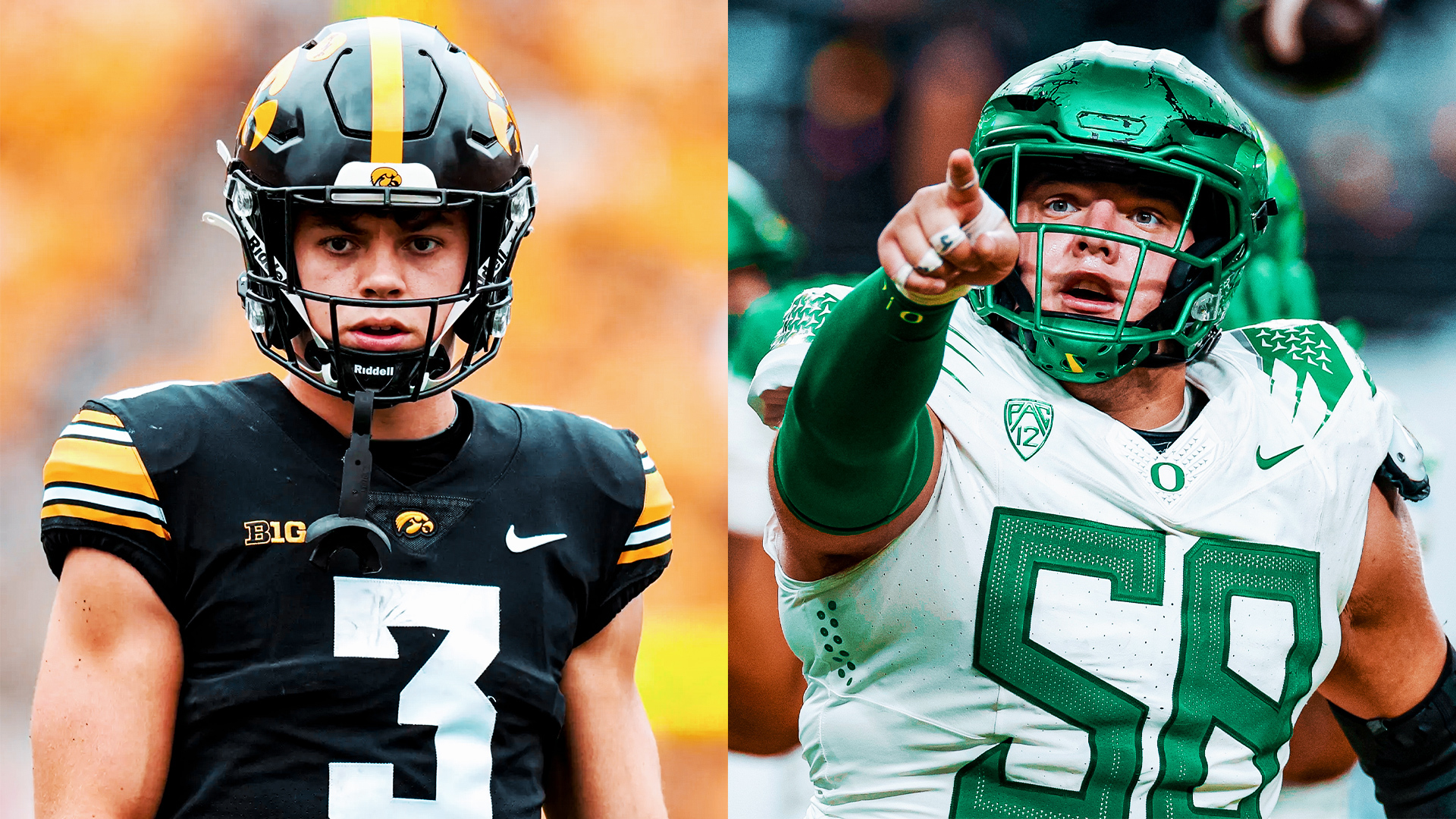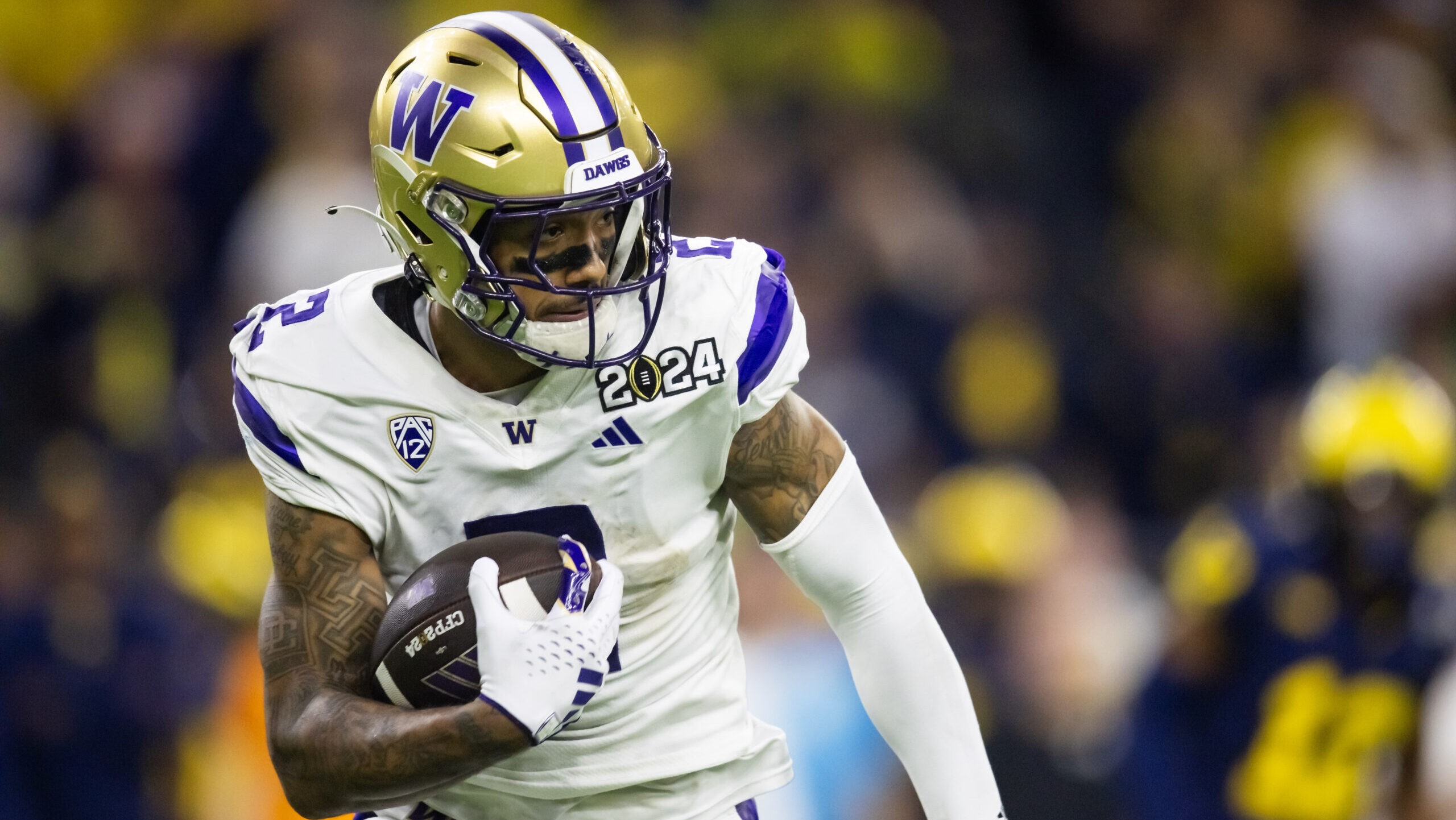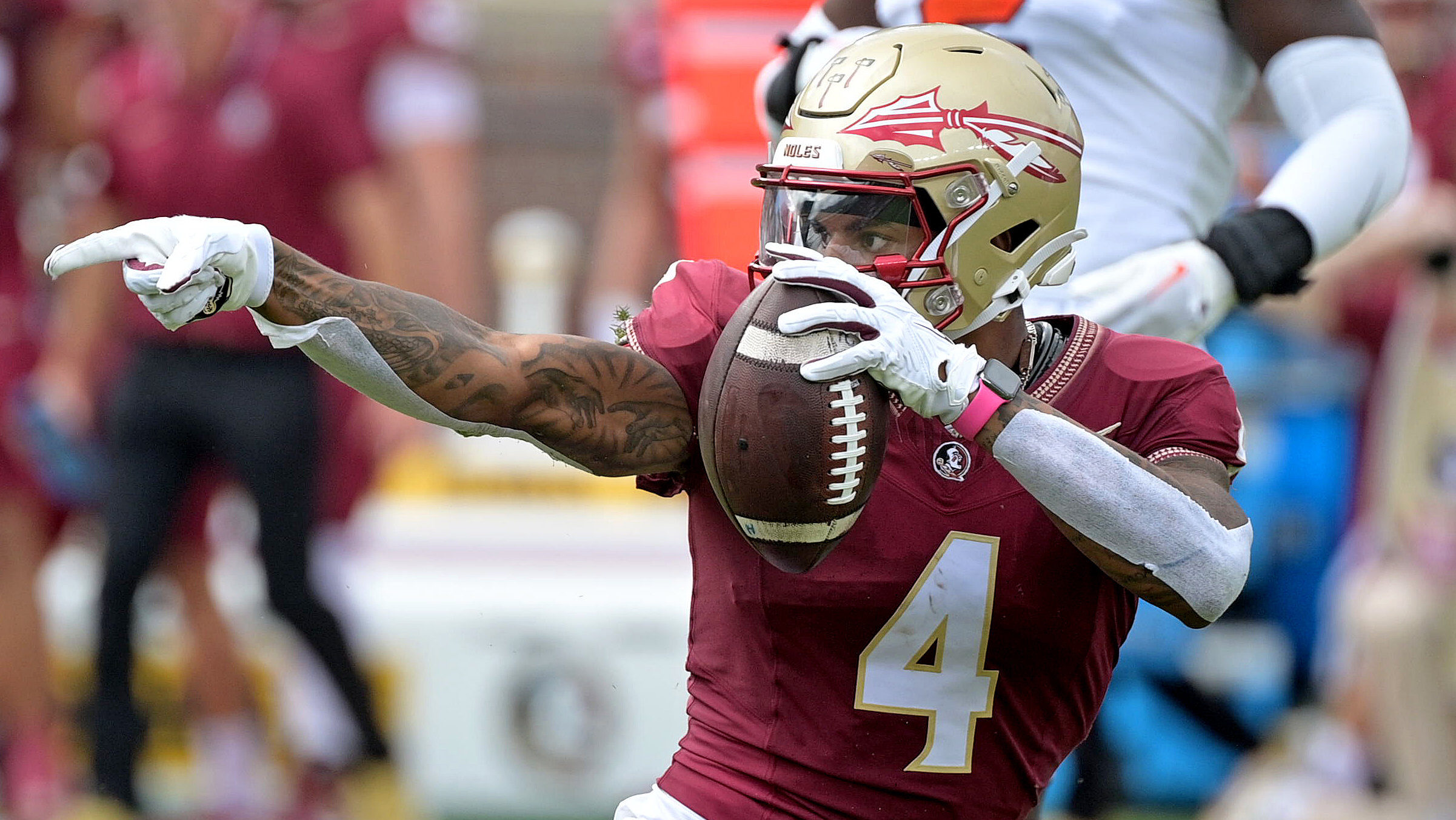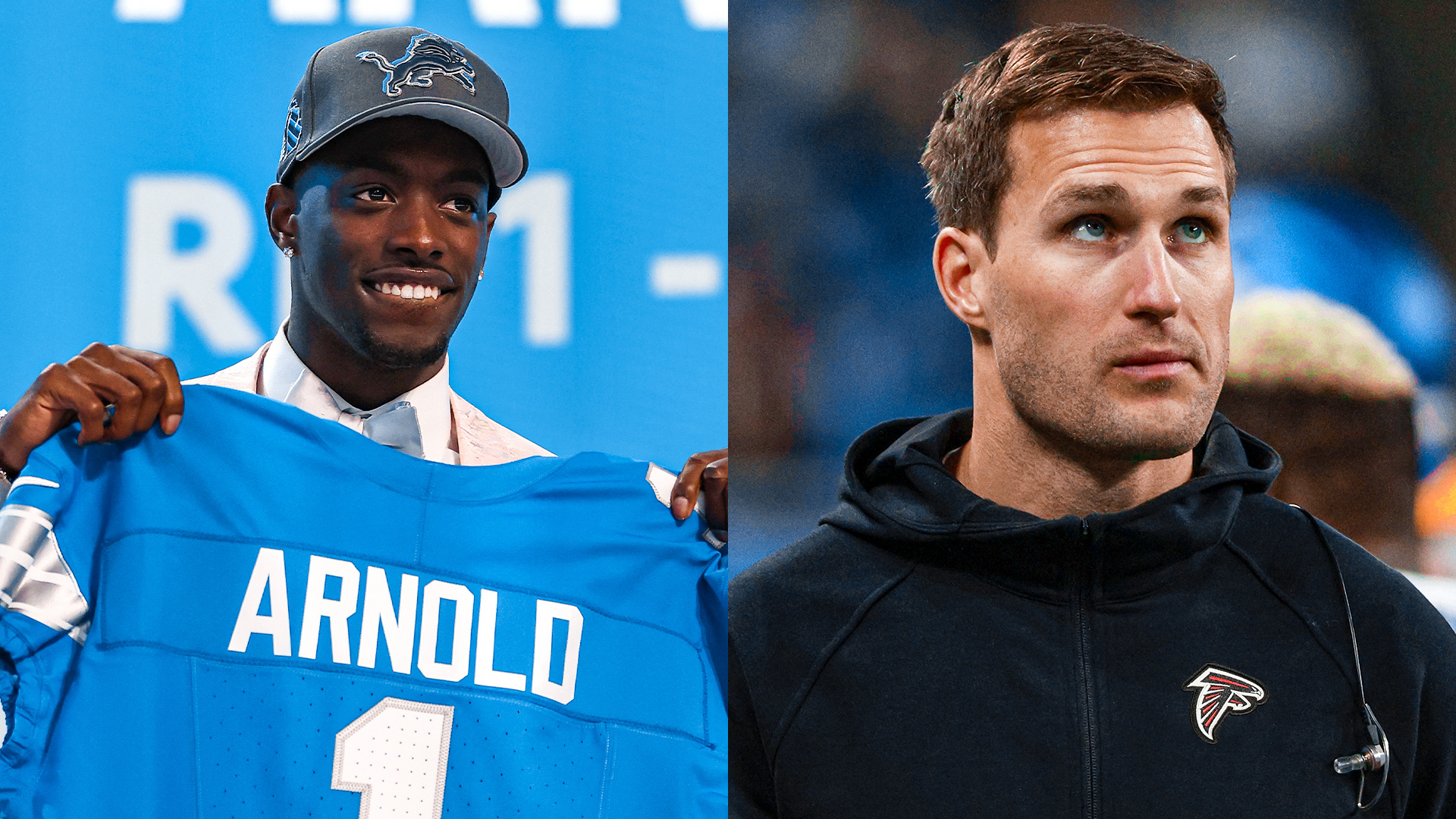Analysis
10/7/23
10 min read
How To Handle Week 5 Chalk in DFS
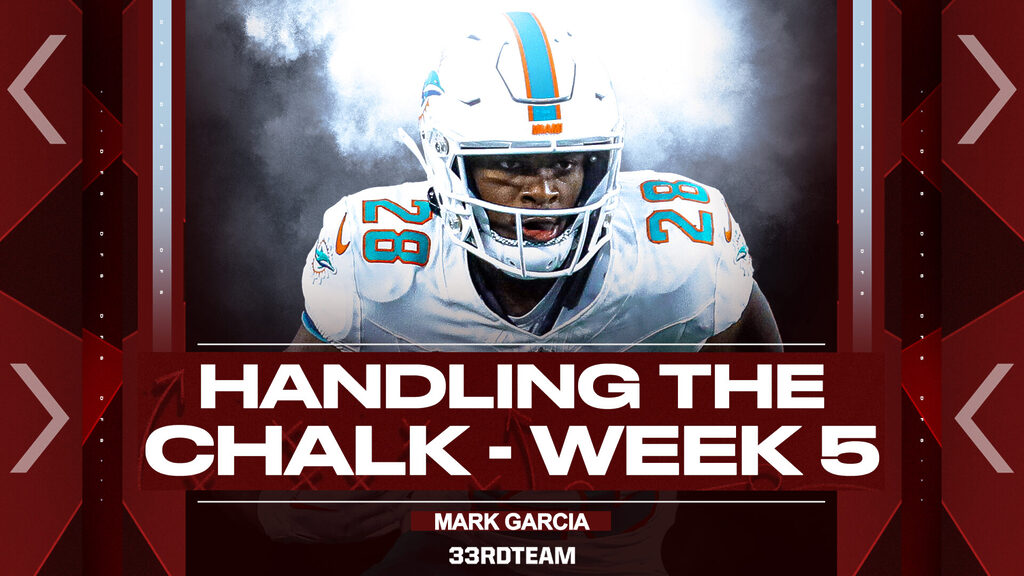
Chalk will develop on any given slate. It is a human psychological certainty introduced in games of competing agents. Things such as crowd or group, psychology, risk acceptance profiles, a desire to seek comfort and an innate disdain for the unknown lead people to naturally gravitate toward certain areas of a player’s range of outcomes through a craving for control. This yearning for comfort is exactly what we will look to dissect and break through in this weekly article.
We’ll also explore theoretical and conceptual areas of roster construction in DFS as we examine various pieces of chalk throughout the season, with the goal of growing as players along the way. Numerous tips, or best practices, will emerge from this exploration. With that, and in our best Bruce Buffer voice, it’s time!
Week 5 Chalk
 De’Von Achane, Miami Dolphins
De’Von Achane, Miami Dolphins
De'Von Achane carries an absurd 9.0 true yards per carry, 10.3 yards per touch, 45.7 percent juke rate and 18.5 percent breakaway run rate into Week 5, ranking first in the league among qualified running backs. He has 16 evaded tackles on 27 carries and eight receptions, which is by far the highest per-touch elusiveness rating through the season’s first month of play.
He also seemingly took over the lead back role in the Miami Dolphins’ backfield in the second half of the team’s Week 4 loss to the Buffalo Bills. The problem with assuming the workload will carry forward is the game environment in which it occurred, with a pure negative game script likely contributing to the second-half snap rate split and touch dispersal between him and Raheem Mostert.
In other words, did Achane supplant Mostert, or was his usage a product of the game environment? That’s an important distinction, considering the vastly different game environment expected in Week 5 against the New York Giants, who allow a ridiculous 1.80 yards before contact per rush against this season.
 Wan’Dale Robinson, New York Giants
Wan’Dale Robinson, New York Giants
Wan’Dale Robinson was selected by the current coaching regime as a second-round pick in the 2022 NFL Draft. His 28.2 percent targets per route run rate highlights his schemed usage in the offense.
That said, Robinson carries a paltry 3.4 aDOT on 11 targets this season (6.2 aDOT in 2022) and played just 64 percent of the team’s offensive snaps in Week 4, splitting time with another hand-picked asset on the offense: Parris Campbell. Robinson is objectively underpriced (he’s priced at the minimum on DraftKings) but has very little chance to provide anything more than a solid cost-considered salary multiplier in this spot.
 Justin Jefferson, Minnesota Vikings
Justin Jefferson, Minnesota Vikings
He’s Justin Jefferson — the man is always in play. The other side of that argument is a Steve Spagnuolo defense designed to limit wide receivers such as Jefferson. While that lowers his chances of putting the slate squarely out of reach (as in, you had to have him in order to win anything this weekend), Jefferson has still scored between 26.5 and 30.9 DK points in every contest this season.
 Bijan Robinson, Atlanta Falcons
Bijan Robinson, Atlanta Falcons
Electric rookie running back Bijan Robinson leads the league in receptions among qualified backs this season and has rushed for 318 yards through his first four NFL games, which ranks third in the league. His 5.6 true yards per carry ranks sixth in the league.
At some point this season, Robinson will find the end zone multiple times in a game, regardless of the fact he has just one carry inside the 10-yard line compared with five for Tyler Allgeier. The ticking time bomb could go off at any moment.
 Ja’Marr Chase, Cincinnati Bengals
Ja’Marr Chase, Cincinnati Bengals
Ja’Marr Chase is the unquestioned star of a broken offense, one that is severely limited by a quarterback who lacks any semblance of mobility in the pocket. That immobility has forced Zac Taylor to run an offense based exclusively out of the gun, which, to this point in the season, has limited Chase’s ability to generate much misdirection pre-snap via motion.
Because the personnel on the roster precludes the Bengals from playing a true Z-type wide receiver, paired with the limited pre-snap movement, it allows opposing defenses to play more straight-up two-high defensive alignments, limiting the per-touch upside from the entire offense in the process.
Enter a Jonathan Gannon defense that plays a modified two-high defensive scheme through shallow safeties (about 10-12 yards in depth beyond the line of scrimmage compared with the more natural 18-20 yards in other defenses around the league), which further limits the per-touch upside of all Cincinnati Bengals skill position players here. The injury to Tee Higgins could give Chase a clear path to 13-15 targets in this spot, but the limited upside lessens the chances of Chase burning you for not playing him.
 Tyreek Hill, Miami Dolphins
Tyreek Hill, Miami Dolphins
Wink Martindale, the defensive coordinator for the New York Giants, has blitzed and run man coverage at the second-highest rates in the league this season. Will that continue against the most dynamic offense in the league? I sure hope so. Tyreek Hill, against primary man coverage over the previous two seasons with a healthy Tua Tagovailoa, is one of the great cheat codes of modern football.
 Breece Hall, New York Jets
Breece Hall, New York Jets
First, the comments surrounding Breece Hall about a potential easing of his strict snap count to this point in the season were vastly overstated by a major media outlet this week. That said, Hall ranks second in the league among qualified running backs in yards per touch at 6.8, behind only Achane. The matchup is as pure as they come against a Denver Broncos defense that is allowing a robust 5.6 yards per carry. The Broncos also allow 1.50 yards before contact per carry this season, which is third-worst in the league.
 Marquise Brown, Arizona Cardinals
Marquise Brown, Arizona Cardinals
Marquise Brown has seen 27 targets during his previous three games. That’s the good. The bad is that his offense holds the second-highest rush rate over expectation through four games, behind only the Atlanta Falcons, and the Bengals allow 1.63 yards before contact per carry (second worst in the league). Those tendencies should allow the Arizona Cardinals the ability to control the game environment via a surprisingly dynamic run-blocking scheme.
 Alvin Kamara, New Orleans Saints
Alvin Kamara, New Orleans Saints
Thirteen catches on 14 targets in his first game action of the season in Week 4 has the field giddy to shove Alvin Kamara into its rosters through a Las Vegas–implied team total of 19 points. For comparison, the New York Jets are projected for 20.5 points currently.
 Travis Kelce, Kansas City Chiefs
Travis Kelce, Kansas City Chiefs
We know the deal by now – by all means, play Travis Kelce; just ensure he is paired with Patrick Mahomes when you do.
 David Montgomery, Detroit Lions
David Montgomery, Detroit Lions
The Carolina Panthers allow 1.50 yards before contact per carry this season, good for a tie for third-worst in the league through four weeks. Amon-Ra St. Brown has been deemed doubtful, while Jahmyr Gibbs popped on the team’s injury report Friday with a new injury (never a good sign heading into the weekend).
The Detroit Lions have one of the league's highest red zone rush rates. Finally, Detroit is currently instilled as a 10-point home favorites.
Everything lines up well for David Montgomery to approach or surpass his “healthy game average” of 26.5 carries and one target. Finally, Montgomery is on pace for two touchdowns per four quarters played, with five scores through 10 quarters.
 Joe Mixon, Cincinnati Bengals
Joe Mixon, Cincinnati Bengals
Joe Mixon’s 84.7 percent opportunity share ranks fourth in the league but is weighed down by a 4.1 true yards per carry, which ranks 29th. A 44.7 percent route participation rate could increase should Higgins miss.
 Tennessee Titans D/ST
Tennessee Titans D/ST
Cheap chalk defense, you say? No, thank you, Tennessee Titans, not today.
Ugly Slate
Five of the top 10 offenses in points per game are absent from this slate. There are also only 10 games on the main slate, with our first run-in with bye weeks and a game in London. That leaves two games with a game total north of 50 points and just four teams with a Vegas-implied team total greater than 26 points.
The field seems to be taking that slate composition as a reason to jam in as many high-priced players as possible while scrounging around for any semblance of value. Hence, the dubbing of “ugly slate.” In reality, this slate is complex and diverse and provides an interesting canvas to utilize a bit of game theory in our search for first place.
By changing how we view the slate, we can break free from the mental blocks that prevent us from constructing +EV rosters. But what about the value?
Where is the Value Coming From?
First, we must understand the full extent of the chalk on this slate and, more importantly, what it tells us. Left off the list of chalk from above were names including Tyler Boyd ($4,500 on DK), Rashee Rice ($3,600 on DK) and Zach Ertz ($3,500 on DK), all of whom are expected to be on more than 15 percent of the rosters in play this week. When you combine those names with Robinson, Hall and the Titans D/ST, we’re left with a clearly defined expectation of fragile pay-down chalk to fit in the pay-up studs.
While that leaves the slate in the “ugly” category due to the abundance of fragile chalk, it also paints a clear picture of a relative lack of ceiling among the players in the lower pricing tier. On a slate such as this, where the field seems to accept fragility, why not embrace the same fragility but with players with a much higher ceiling?
Tank Dell ranks sixth in yards per route run against man coverage, and the Falcons are in man coverage at a top-10 rate this season. Standout corner A.J. Terrell could be utilized in shadow coverage of Nico Collins after lining up opposite Calvin Ridley for 79 percent of snaps in Week 4. Dell is priced at just $4,800, bringing a clear path to 30-plus DK points.
Jordan Addison’s route participation when the Minnesota Vikings are trailing jumps to just under 85 percent. Addison is priced at just $5,300 in a game the Vikings against the Kansas City Chiefs where the Vikings are expected to play from behind. Addison currently sports a 2.18 fantasy points per target on the season, which ranks a respectable 21st in the league through four weeks.
Alec Pierce has been in a route on 100 percent of the team’s called pass plays this season and carries an elite 17.7 aDOT (sixth deepest of qualified pass-catchers). He gets a matchup with the extreme pass-funnel Tennessee defense, which should also mute Anthony Richardson’s rushing upside.
Finally, Jalin Hyatt’s 19.8 aDOT ranks second in the league behind only Marvin Mims Jr. Hyatt saw his highest snap rate of the season in Week 4 at 60 percent, and the team should be trailing throughout its game against the Dolphins. On that note, Mims will likely see an increase in route participation and snap rate at some point in the season. We should be there when that happens.
All five players bring top-end ceiling, albeit with a shaky (and, quite frankly, scary) floor. But the rest of the perceived value on the slate comes with similar levels of shakiness with lower ceilings. Why not embrace the same variance but in a way that provides paths to increased ceiling while the field messes around with plays with minimal upside?
That will do it for our Week 5 exploration of chalk and some theoretical and conceptual takeaways. We’ll run this series every week of the 2023 season, picking out new learning points each week. I welcome all feedback with this new column, so please don’t hesitate to reach out to let me know things you like or things I could do better.
Follow The 33rd Team Podcast Network on Spotify and Apple Podcasts.


